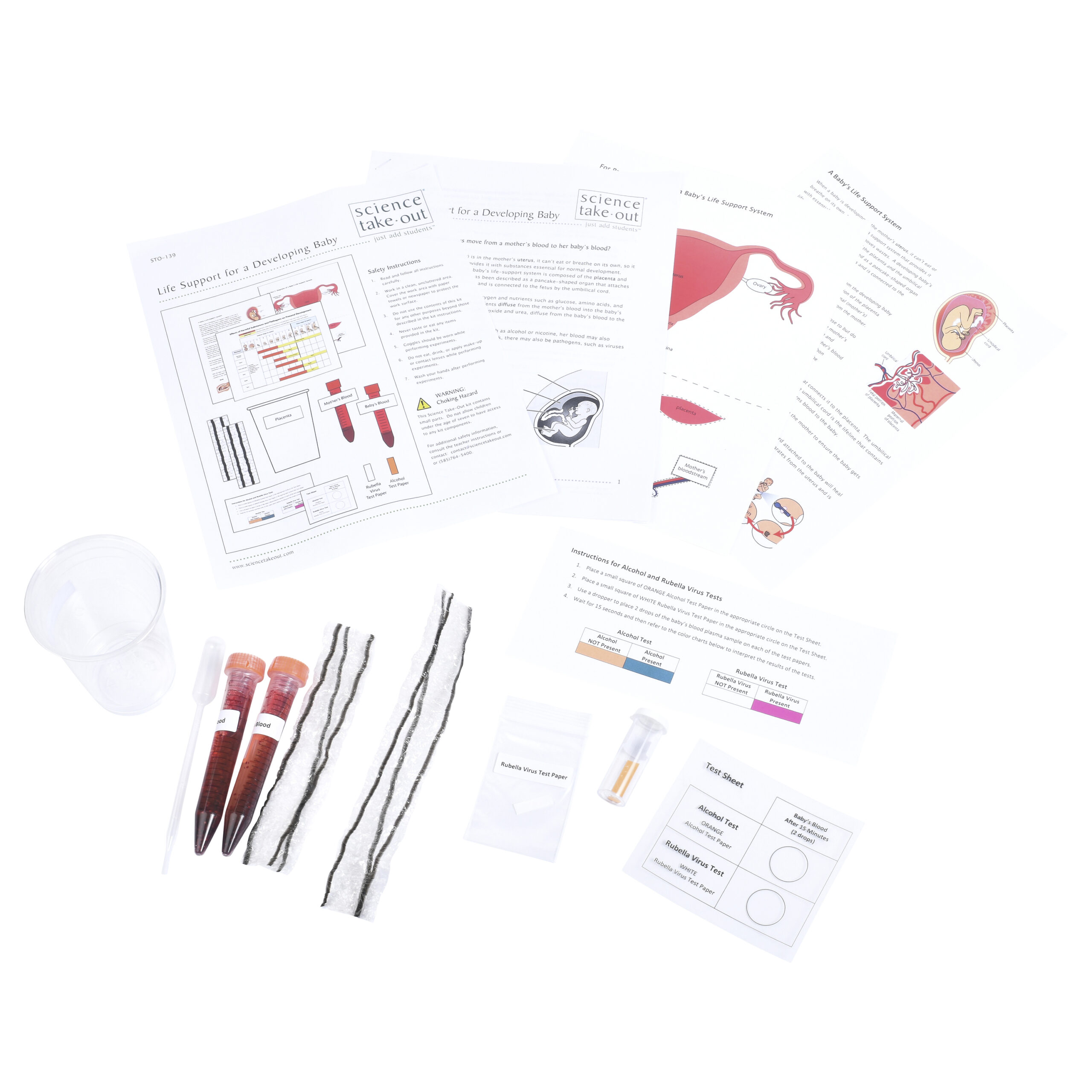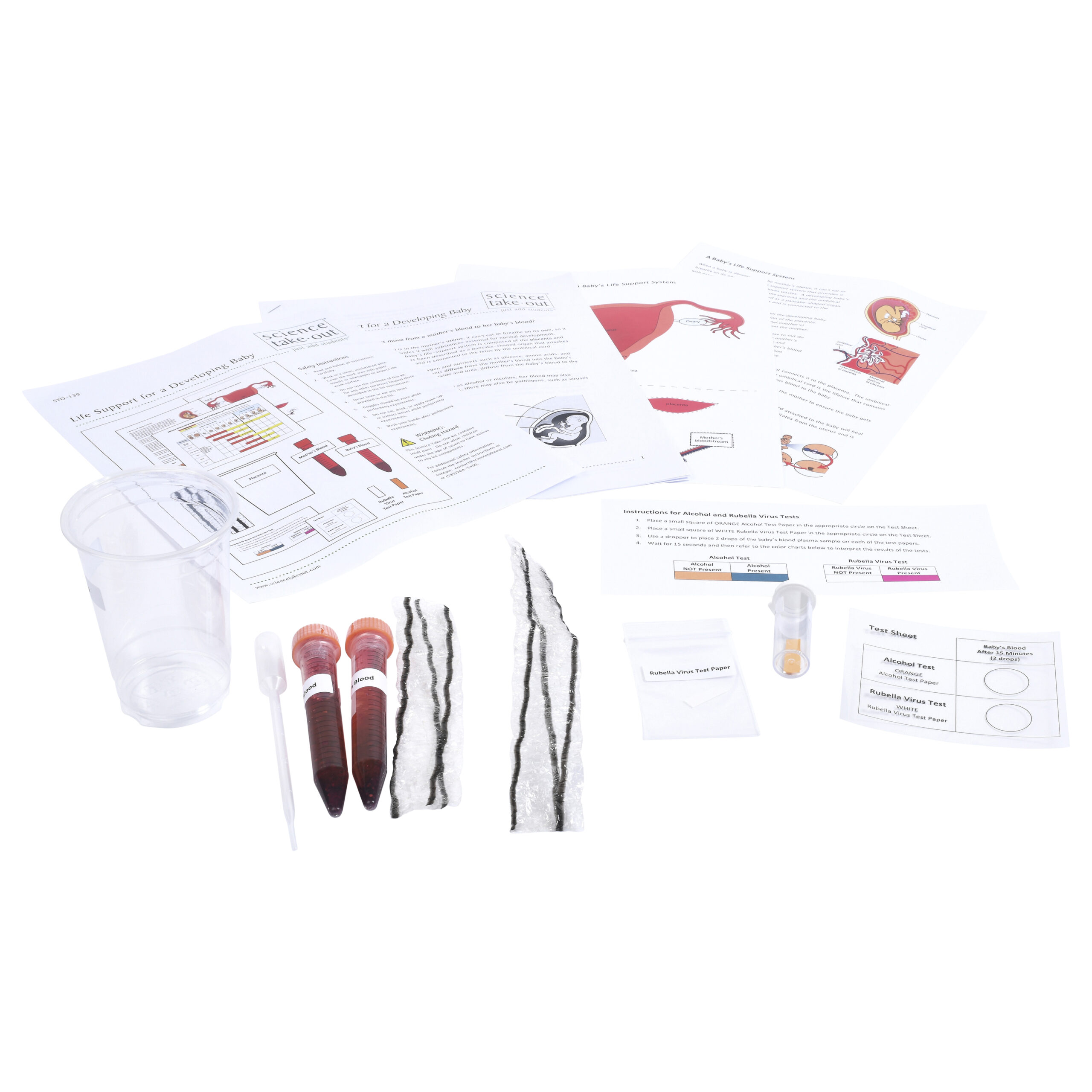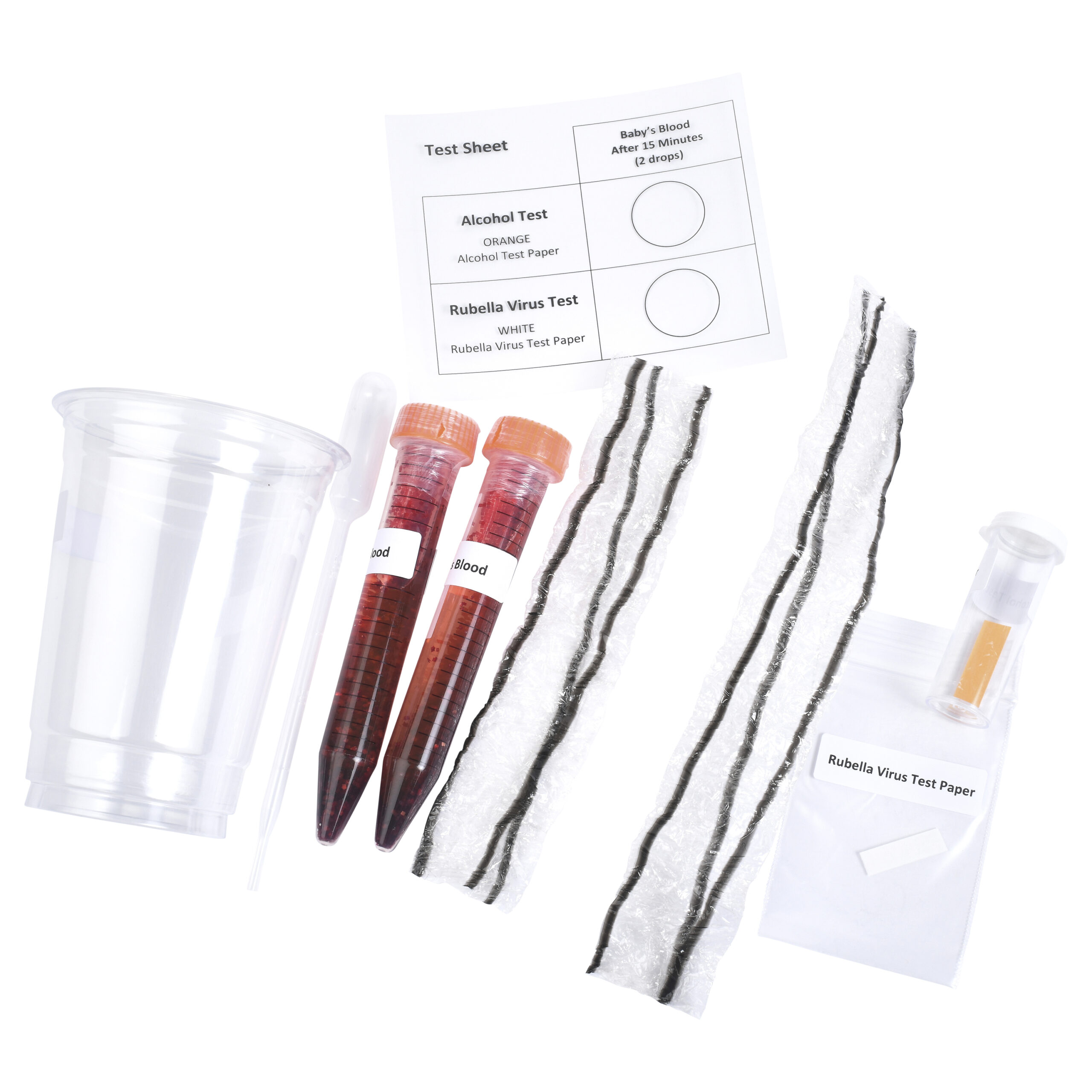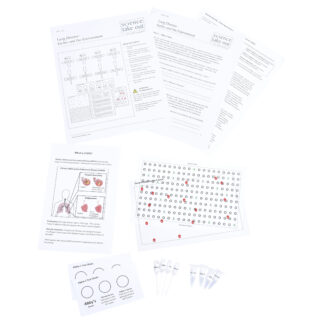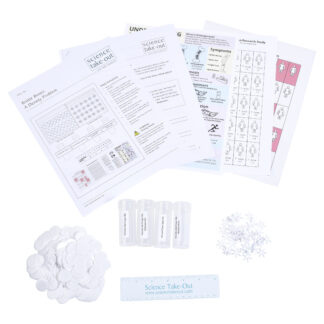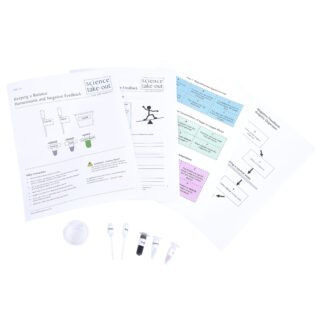Life Support for a Developing Baby
$19.95 – $155.95
Make a model placenta to investigate effects of prenatal exposures.
- Create a model placenta and investigate whether alcohol and viruses can move from a mother’s blood to her developing baby.
- Explore the effects of prenatal exposure to hazardous substances and pathogens that can cause birth defects.
Kit Includes
- Student instructions
- 1 plastic cup labeled “Placenta”
- 2 pieces of dialysis tubing
- 1 tube of simulated “Mother’s Blood”
- 1 tube of simulated “Baby’s Blood”
- 1 dropper
- Alcohol and Rubella Virus Test Sheet
- 1 strip of simulated “Alcohol test paper”
- 1 strip of simulated “Rubella virus test paper”
- Instructions for Alcohol and Rubella Virus Tests
- Diagrams of Baby’s Life Support – sheet of cut-outs
- A Baby’s Life Support System – information sheet
- Effects of Harmful Substances and Pathogens on Prenatal Development – chart
Quantity Discounts
Kits:
- 1 – 9 kits: $19.95 each
- 10 – 24 kits: $18.95 each
- 25+ kits: $17.96 each
Unassembled:
- 1 – 9 packs: $155.95 each
- 10+ packs: $148.15 each
Refills:
- 1 – 9 packs: $79.95 each
- 10+ packs: $75.95 each
Correlation to Next Generation Science Standards (NGSS) Shop by NGSS »
Performance Expectations:
MS-LS1-3. Use argument supported by evidence for how the body is a system of interacting subsystems composed of groups of cells.
Science & Engineering Practices
Developing and Using Models - Develop and use a model to describe a phenomenon.
Disciplinary Core Ideas
LS1.A: Structure and Function - In multicellular organisms, the body is a system of multiple interacting subsystems. These subsystems are groups of cells that work together to form tissues and organs that are specialized for particular body functions.
Crosscutting Concepts
Systems and System Models - Models (e.g., physical, mathematical, computer models) can be used to simulate systems and interactions — including energy, matter, and information flows — within and between systems at different scales.
